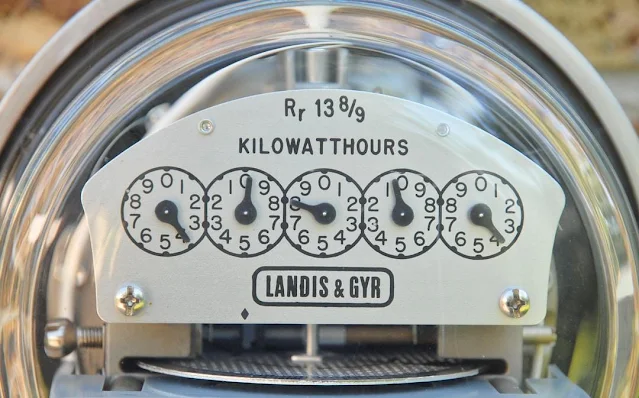Ad Code
Translate
Smart strategies for trading on crypto exchanges
October 20, 2025
Five Do’s For a Healthy Turnover That Bolsters Talent-Retention
October 20, 2025
What is Ozempic (semaglutide)? (Updated in 2025)
January 30, 2025
Discover Honeybee Pharmacy (2025 Guide Important Consumer Tips)
October 14, 2025
How To Find Suitable Properties In Cyprus?
October 20, 2025
Posture Bra: Improving Back Support and Comfort
October 20, 2025
10 Effective Strategies to Improve Domain Authority of Your Website
October 20, 2025
How To Know if Your Furnace Blower Motor Is Bad
Zizo Gala-Mkhize
March 12, 2022
Depending on where you live, your furnace could face a heavy workload when trying to heat your home this winter. When the outside temperatures dip below freezing, your heating system will have to work hard to combat outside conditions. As a result, your equipment has to meet the demands and strains of the frequent cycles required to heat your home. Over the course of normal use, wear and tear can cause problems with your system, and individual parts and components will eventually give out.
In general, your furnace should last around 20 years. Your furnace may last well past the expected 20-year life span with proper care, maintenance, and routine service. However, even with proper care, the internal parts of your furnace, like the blower motor, may stop working. Because your heating system relies on several parts to deliver warm air, you will be without heat when system components give out.
Your furnace blower motor is a significant piece of your heating system. Understanding when to replace or service furnace parts will help you ensure that your heating system continues to run. Let's take a look at how to know if the furnace blower motor is bad.
Poor Airflow
Your furnace blower motor is responsible for pushing hot air through your ductwork and into your home. One of the most obvious signs that you have a problem with the blower motor is hampered airflow. If there is no air or very weak airflow coming from the air vents, there could be a malfunction with the blower motor. While there could be several issues, from leaky ducts to dirty air filters that could cause diminished airflow, the blower motor should also be investigated. In some cases, the blower motor could be clogged with dirt and dust, or there could be a problem with a capacitor. If the motor has overheated, has been exposed to moisture, or is nearing the end of its service life, it may need to be replaced.
If you don't have any warm air coming from your vents when you turn the heat on, the blower motor could have completely failed. If this is the case, getting a replacement blower motor will be your only option. A qualified HVAC technician can diagnose the problem accurately and offer solutions for a possible repair or replacement.
Increased Energy Bills
Your furnace blower motor is one of the components in your unit that consumes the most energy. While changes in seasons will bring about variations in your energy bills, a malfunctioning furnace blower could result in higher than usual energy usage and charges. A blower motor that is wearing down will have to work harder to push warm air through your air ducts. As a result, the motor will consume more energy, and you will see that reflected in your energy bills. While there are several HVAC issues that could cause increased energy usage, a failing furnace blower motor could be the problem.
Unusual Noises
Every home and heating system is unique. When you turn your system on, you may notice some sounds that are normal for your house. If you hear unusual noises such as squealing, screeching, rattling, or clanking, you may have an issue with your blower motor. Unusual noises could indicate an issue with bearings or belts or other damage to internal parts. Many of these issues can be repaired by an HVAC professional. However, If you notice loud banging sounds or knocking, it could signal a more serious issue and may require motor replacement.
Your furnace blower is imperative for delivering warm air throughout your home during the winter season. When you have a problem with the blower motor, you may be left out in the cold, literally. It is important to understand the signs of a potential problem and correct it as soon as possible.
Featured Post
DL Mining Launches Ethereum Contract Participation Service, Helping Users Earn $2K Stable Daily Returns
Zizo Gala-Mkhize-
October 20, 2025
Soapie Teasers
Sister Sites
Most Popular
List of 6,000+ Dofollow Commentluv Blogs FREE (Updated 2025)
January 16, 2025
Five Do’s For a Healthy Turnover That Bolsters Talent-Retention
October 20, 2025
How To Choose The Right Place For A Winter Campsite
March 06, 2023
Popular posts
List of 6,000+ Dofollow Commentluv Blogs FREE (Updated 2025)
January 16, 2025
Five Do’s For a Healthy Turnover That Bolsters Talent-Retention
October 20, 2025
What is Ozempic (semaglutide)? (Updated in 2025)
January 30, 2025
Footer Menu Widget
Created By Blogspot Theme | Distributed By Gooyaabi Templates



Social Plugin